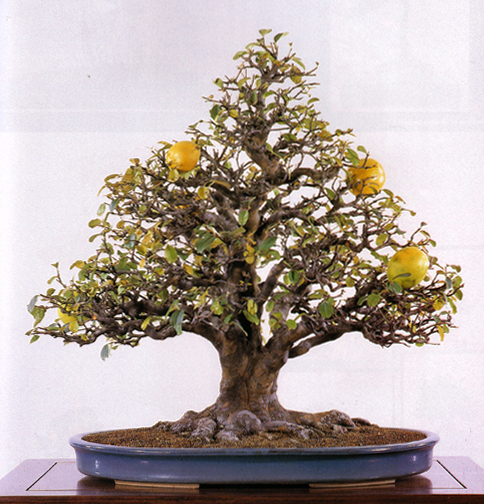
This Chinese quince (Pseudocydonia sinensis) presents a number of striking features, not the least of which is its powerful nebari (surface roots). The photo originally appeared in Bonsai Today issue 35.
This post is part of an article that originally appeared in Bonsai Today issue 23 (out of print). It was later revised and republished in Bonsai Today issue 102.
Improving a Nebari
by Oishi Kazo
Nebari are often under-appreciated, especially in the west. In Japan, bonsai artists will sometimes talk about nebari as though it is the most important feature when looking for bonsai material. If you think about it, this is not far-fetched, as excellent naturally occurring nebari are harder to come by than excellent naturally occurring trunks.
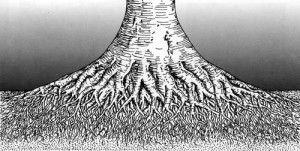
I doubt it is even worth mentioning, as everyone knows this—but because bonsai are grown in very confining containers, regular transplanting is absolutely necessary.
What is frequently forgotten is that transplanting is a time to elevate the quality of your bonsai. In this short article, I would like to share with you some thoughts and advice about nebari (surface roots) and tachiagari (lower trunk, from the nebari to the first branch).
Quality bonsai start with the roots. How many bonsai on exhibit have you seen? Whether live or in photos, have you ever seen one with a bad nebari? Assuredly, the answer is no (the author is referring to exhibits in Japan).
Two defects that will not correct themselves over time
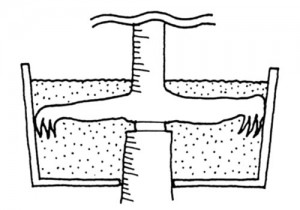
When the pot is too small and the roots look like this…
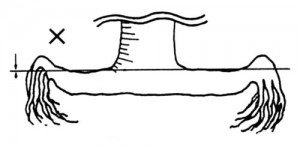 ….lower the soil line and gradually push the protruding humps down.
….lower the soil line and gradually push the protruding humps down.
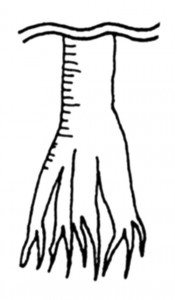 When the pot is too tall and narrow, and the roots grow like this…
When the pot is too tall and narrow, and the roots grow like this…
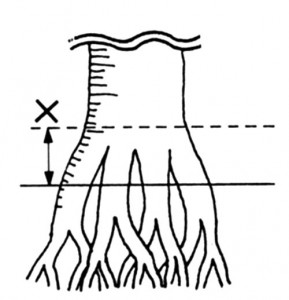 …lower the soil line to below where they bulge out.
…lower the soil line to below where they bulge out.
Say posted for more from Oishi Kazo on nebari.
Part one of In Search for the Perfect Nebari is comprised of An Ingenious Technique parts 1 and 2 taken together.
You are, of course, correct that the nebari makes the tree. Without a good nebari, any bonsai looks like a stick in the ground. I’m glad you titled your article “In Search of the Perfect Nebari” because, like the bonsai itself, you never really get to the finished stage. Sadly, sometimes we lose sight of the target and we continue “running” past the finish line. In my opinion, the trident you show has be taken to far. That being said, it is definitely a wonderful work of art (I wouldn’t turn it down!)